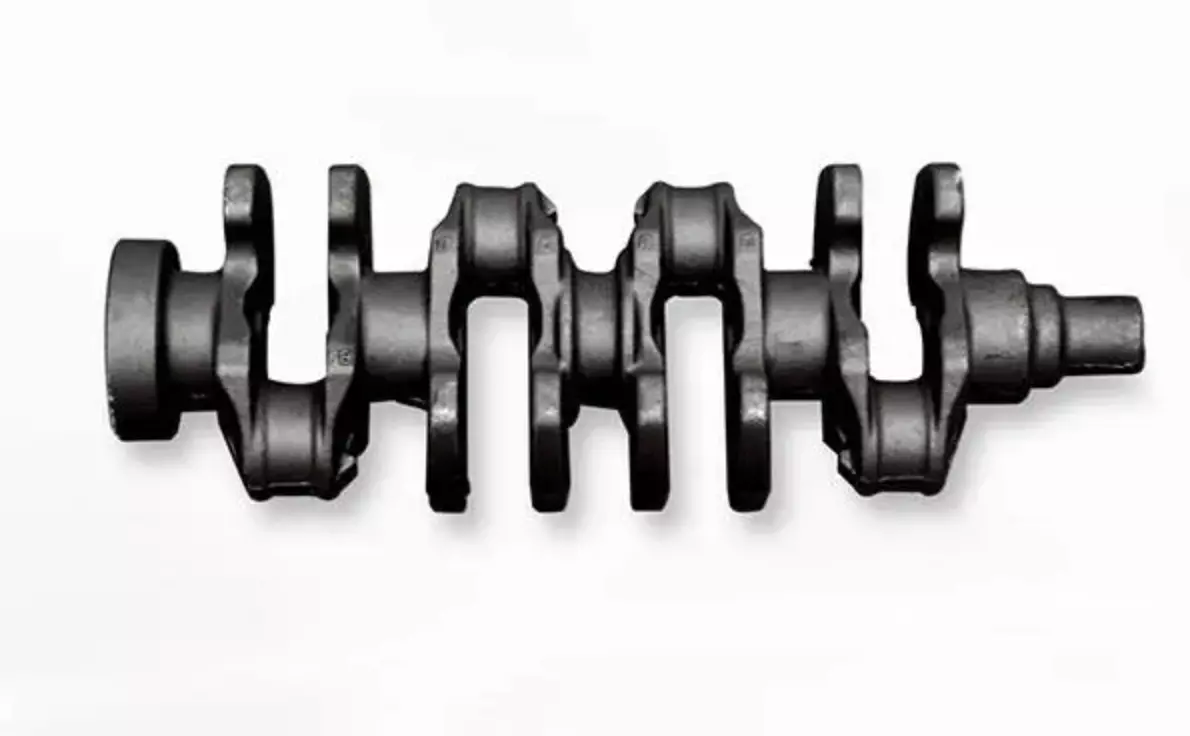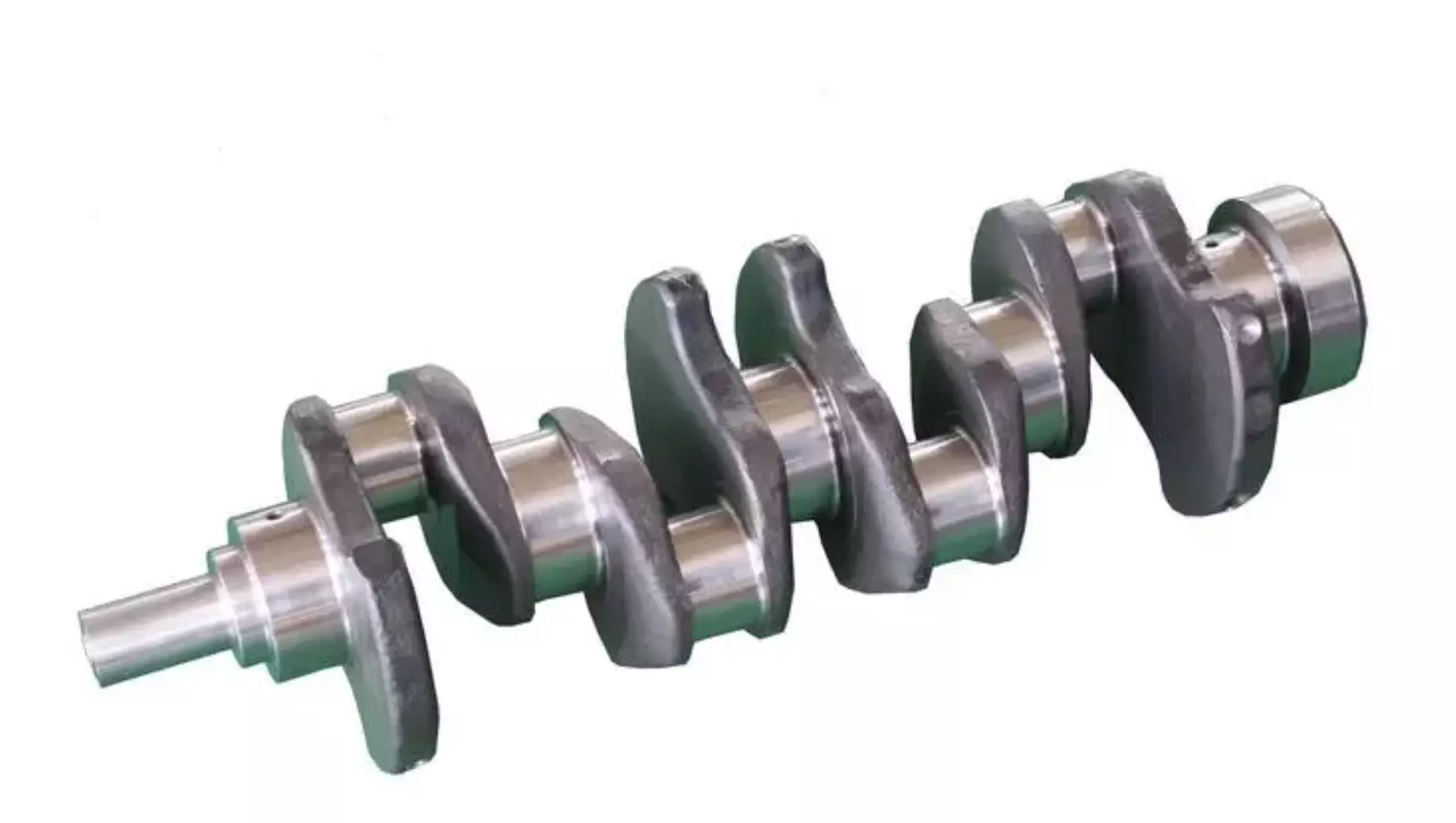Forged Crankshafts: The Powerhouse of High-Performance Engines
In the realm of automotive engineering, the crankshaft stands as a silent hero, converting the explosive energy generated within an engine's cylinders into the smooth rotation of wheels. Within this crucial component, forged crankshafts have emerged as a testament to precision engineering and the art of material science. In this article, we delve into the advantages of forged crankshafts and explore the critical role of raw materials in their construction.
Advantages of Forged Crankshafts
1. High Strength
The heart of any vehicle, the engine, generates immense pressure and speed, demanding components that can endure this relentless force. Forged crankshafts rise to this challenge through a meticulous manufacturing process that includes multiple heat treatments and thermal deformation steps. This process results in a refined grain size, significantly improved mechanical properties, and unparalleled durability. The outcome is a crankshaft capable of withstanding the intense forces within the engine.
2. Fatigue Resistance
In the unforgiving world of high-speed rotation, fatigue resistance is non-negotiable. Forged crankshafts exhibit remarkable elasticity and crack resistance, ensuring they remain intact during prolonged periods of high-speed rotation. This quality translates into outstanding wear resistance and exceptional durability, even in environments characterized by high frequency and speed.
3. Wear Resistance
Forged crankshafts, crafted from high-strength alloy steel, undergo additional treatments to enhance their wear resistance. Heat treatments, hardening procedures, and other specialized processes fortify the surface of these crankshafts. This heightened wear resistance minimizes crankshaft wear during extended high-speed operation, making vehicles more adaptable to diverse working conditions.

Raw Materials for Forged Crankshafts
The material selection for forged crankshafts is as critical as their manufacturing process. Here's a closer look at the raw materials used:
1. Material Types
Forged crankshafts must possess superior strength, wear resistance, and durability. The common materials used for forging crankshafts include carbon steel, alloy steel, and cast steel. While carbon steel is affordable, it lacks the strength to withstand high loads and is prone to fatigue cracks. Alloy steel, on the other hand, offers high strength but can deform and crack, often at a higher cost. As a result, cast steel is the preferred choice for most engines.
2. Common Materials
3. Choosing the Right Material
Selecting the material grade for forged crankshafts involves assessing various factors, including engine model, load, and operating conditions. For everyday vehicles, the cost-effective 45 steel suffices. In contrast, high-performance engines benefit from the use of alloy steel materials like ASTM 4135/35CrMo. Additionally, considering the impact of three-dimensional forces ensures the stability and reliability of the engine.

The choice of materials for forged crankshafts plays a pivotal role in determining engine performance and longevity. By selecting the appropriate materials and embracing precision manufacturing processes, automakers are driving innovation and redefining the capabilities of high-performance engines.
In the hands of automotive innovators, forged crankshafts are not just components; they are powerhouses that ensure the heart of any vehicle—the engine—performs at its peak. They endure the relentless forces generated within, turning explosive energy into the smooth, efficient rotation of wheels. As we navigate towards a future where automotive performance knows no bounds, one thing remains clear: forged crankshafts will continue to be the bedrock of high-performance engines. They exemplify the marriage of science and craftsmanship, continually driving innovation, and redefining the very limits of what our vehicles can achieve.
Advantages of Forged Crankshafts
1. High Strength
The heart of any vehicle, the engine, generates immense pressure and speed, demanding components that can endure this relentless force. Forged crankshafts rise to this challenge through a meticulous manufacturing process that includes multiple heat treatments and thermal deformation steps. This process results in a refined grain size, significantly improved mechanical properties, and unparalleled durability. The outcome is a crankshaft capable of withstanding the intense forces within the engine.
2. Fatigue Resistance
In the unforgiving world of high-speed rotation, fatigue resistance is non-negotiable. Forged crankshafts exhibit remarkable elasticity and crack resistance, ensuring they remain intact during prolonged periods of high-speed rotation. This quality translates into outstanding wear resistance and exceptional durability, even in environments characterized by high frequency and speed.
3. Wear Resistance
Forged crankshafts, crafted from high-strength alloy steel, undergo additional treatments to enhance their wear resistance. Heat treatments, hardening procedures, and other specialized processes fortify the surface of these crankshafts. This heightened wear resistance minimizes crankshaft wear during extended high-speed operation, making vehicles more adaptable to diverse working conditions.

Raw Materials for Forged Crankshafts
The material selection for forged crankshafts is as critical as their manufacturing process. Here's a closer look at the raw materials used:
1. Material Types
Forged crankshafts must possess superior strength, wear resistance, and durability. The common materials used for forging crankshafts include carbon steel, alloy steel, and cast steel. While carbon steel is affordable, it lacks the strength to withstand high loads and is prone to fatigue cracks. Alloy steel, on the other hand, offers high strength but can deform and crack, often at a higher cost. As a result, cast steel is the preferred choice for most engines.
2. Common Materials
a. SAE 1045 Steel: This carbon structural steel combines high hardness and strength with cost-effectiveness, making it suitable for ordinary engines.
b. ASTM 5140/40Cr Steel: An alloy structural steel enriched with chromium, this material enhances hardness, strength, and ductility. It finds its place in mid to high-level engines.
c. ASTM 4135/35CrMo Steel: A superior alloy structural steel, fortified with chromium and molybdenum, boasts excellent mechanical properties and heat treatment performance. It's an ideal choice for high-performance engines.
b. ASTM 5140/40Cr Steel: An alloy structural steel enriched with chromium, this material enhances hardness, strength, and ductility. It finds its place in mid to high-level engines.
c. ASTM 4135/35CrMo Steel: A superior alloy structural steel, fortified with chromium and molybdenum, boasts excellent mechanical properties and heat treatment performance. It's an ideal choice for high-performance engines.
3. Choosing the Right Material
Selecting the material grade for forged crankshafts involves assessing various factors, including engine model, load, and operating conditions. For everyday vehicles, the cost-effective 45 steel suffices. In contrast, high-performance engines benefit from the use of alloy steel materials like ASTM 4135/35CrMo. Additionally, considering the impact of three-dimensional forces ensures the stability and reliability of the engine.

The choice of materials for forged crankshafts plays a pivotal role in determining engine performance and longevity. By selecting the appropriate materials and embracing precision manufacturing processes, automakers are driving innovation and redefining the capabilities of high-performance engines.
In the hands of automotive innovators, forged crankshafts are not just components; they are powerhouses that ensure the heart of any vehicle—the engine—performs at its peak. They endure the relentless forces generated within, turning explosive energy into the smooth, efficient rotation of wheels. As we navigate towards a future where automotive performance knows no bounds, one thing remains clear: forged crankshafts will continue to be the bedrock of high-performance engines. They exemplify the marriage of science and craftsmanship, continually driving innovation, and redefining the very limits of what our vehicles can achieve.

